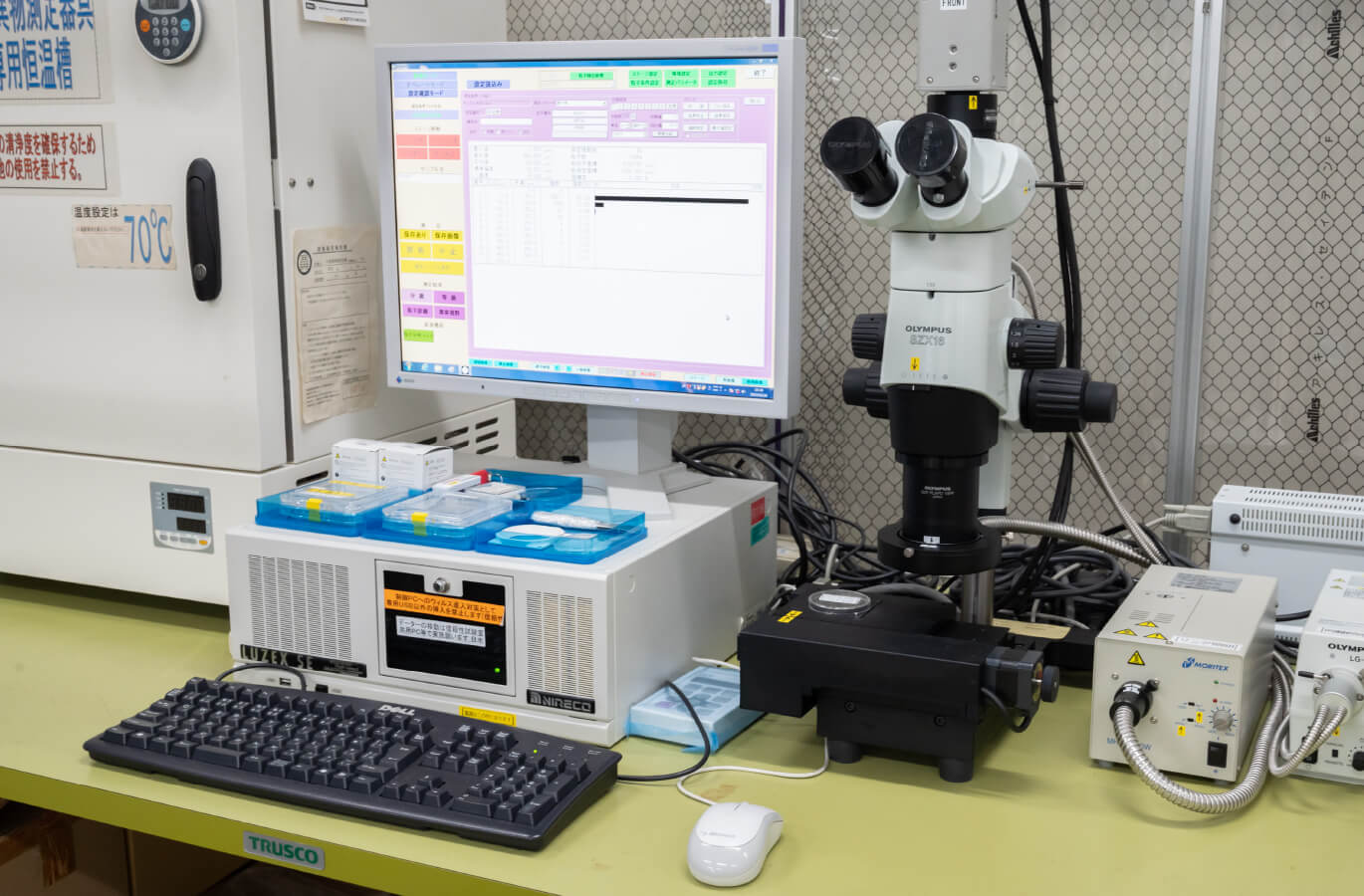Technologies to investigate or analyze metal materials, organic materials and
products, such as surface analysis, element/physical property analysis,
spectroscopic/separation analysis, and non-destructive internal observation.
By conducting material development, foreign substance investigation,
product non-destructive inspection, etc. in-house, we have realized shortening
development period and problem-solving period.
FE-EPMA
Method to investigate the composition of the sample by irradiating the sample surface with an electron beam and analyzing the generated characteristic X-rays with a wavelength dispersive X-ray spectrometer (WDS).
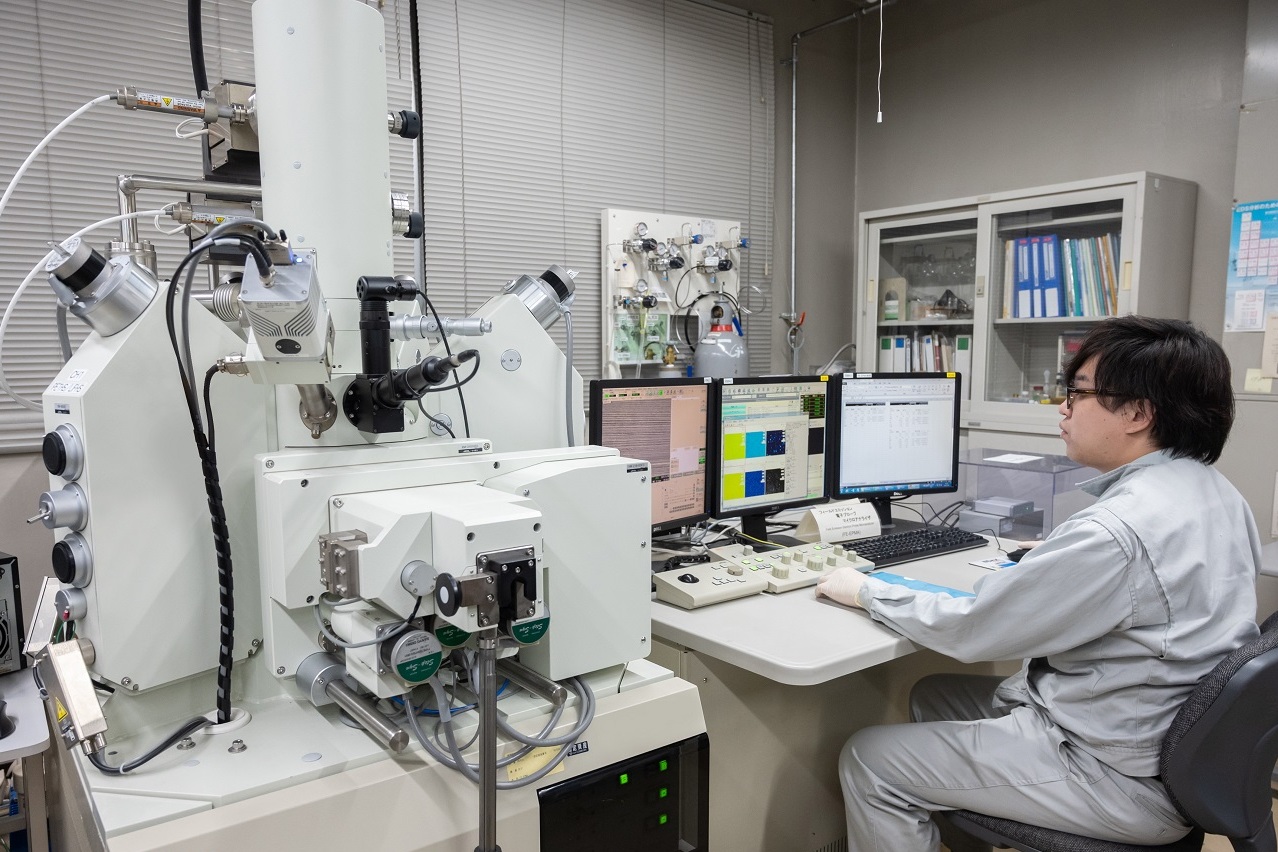
SEM-EDS
Magnify and observe surface condition with the intensity of secondary electrons and reflected electrons generated by irradiating the sample surface with an electron beam.
Energy dispersive X-ray spectrometer (EDS) is also equipped. It acquires elemental information by detecting characteristic X-rays generated during electron beam irradiation.
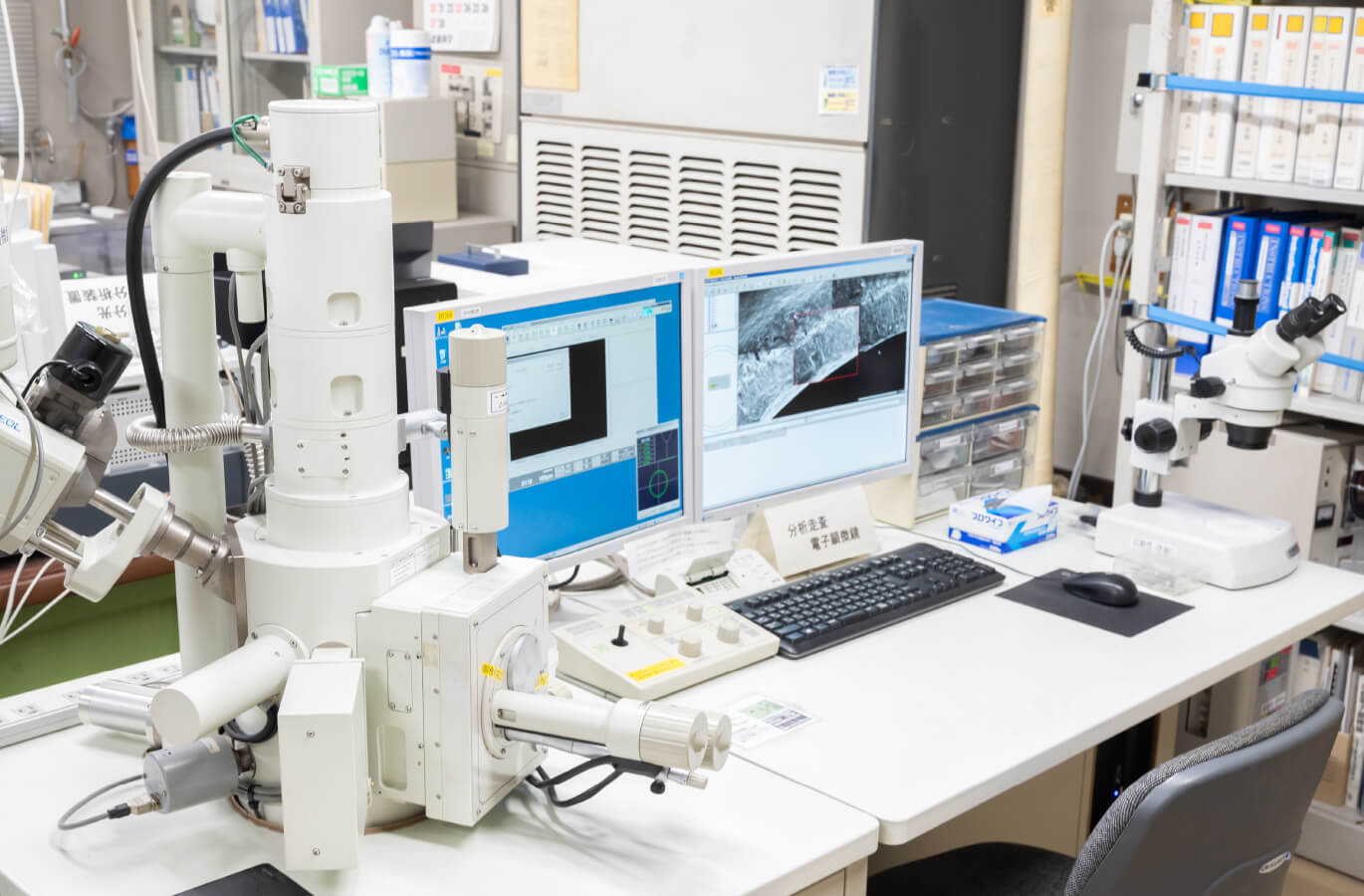
X-ray CT scanner
Observe the internal structure of an object by irradiating it with X-ray and detecting difference in amount of X-ray that is different by material or structure.
Three-dimensional information can also be acquired by computer processing data observed from 360-degree directions.
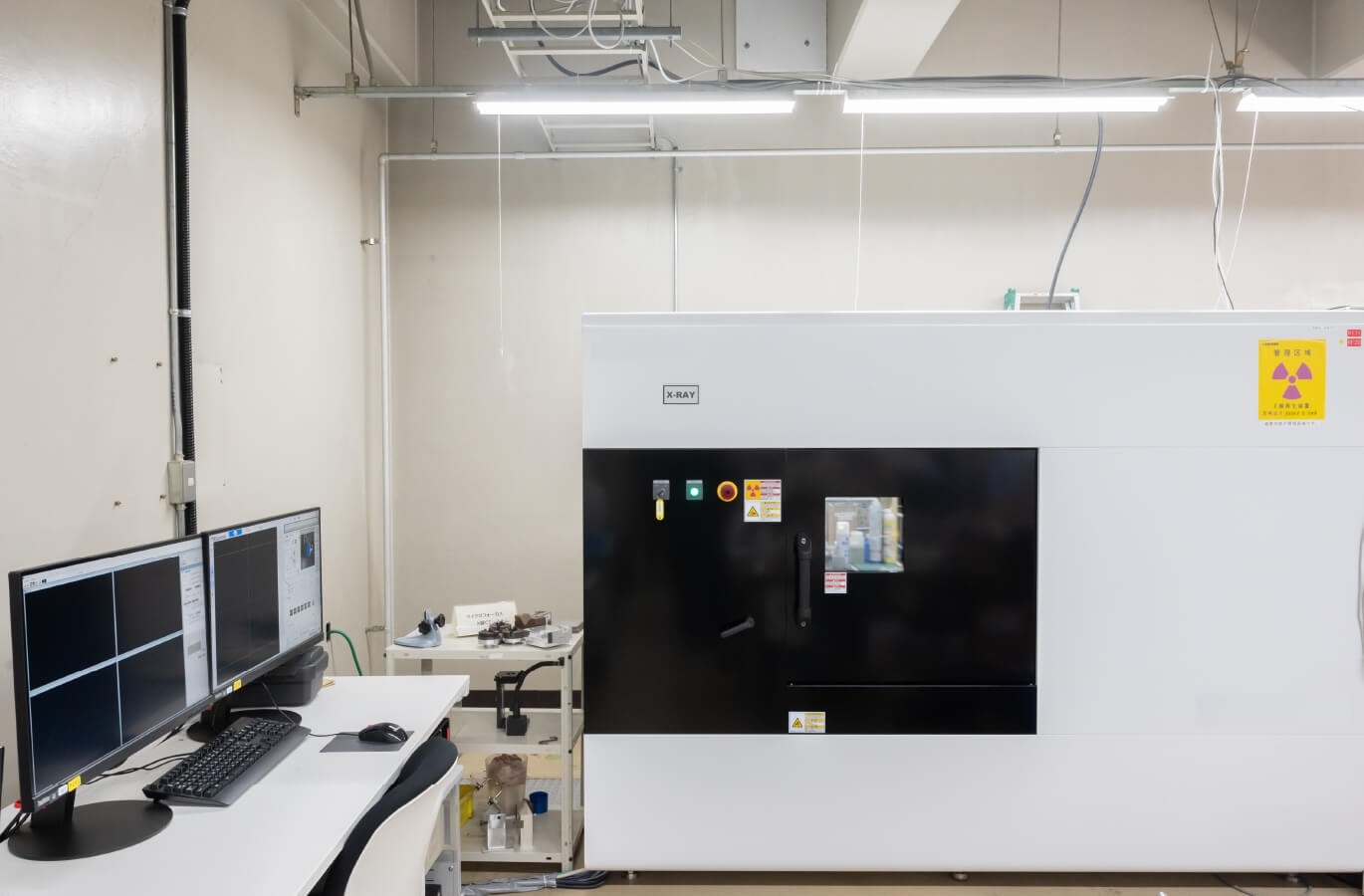
Gas chromatograph
Mass spectrometer
(GC/MS)
The sample components are vaporized in the pretreatment device and separated by GC into each component (compound).
Detecting the separated components with a mass spectrometer and make qualitative and quantitative analysis.
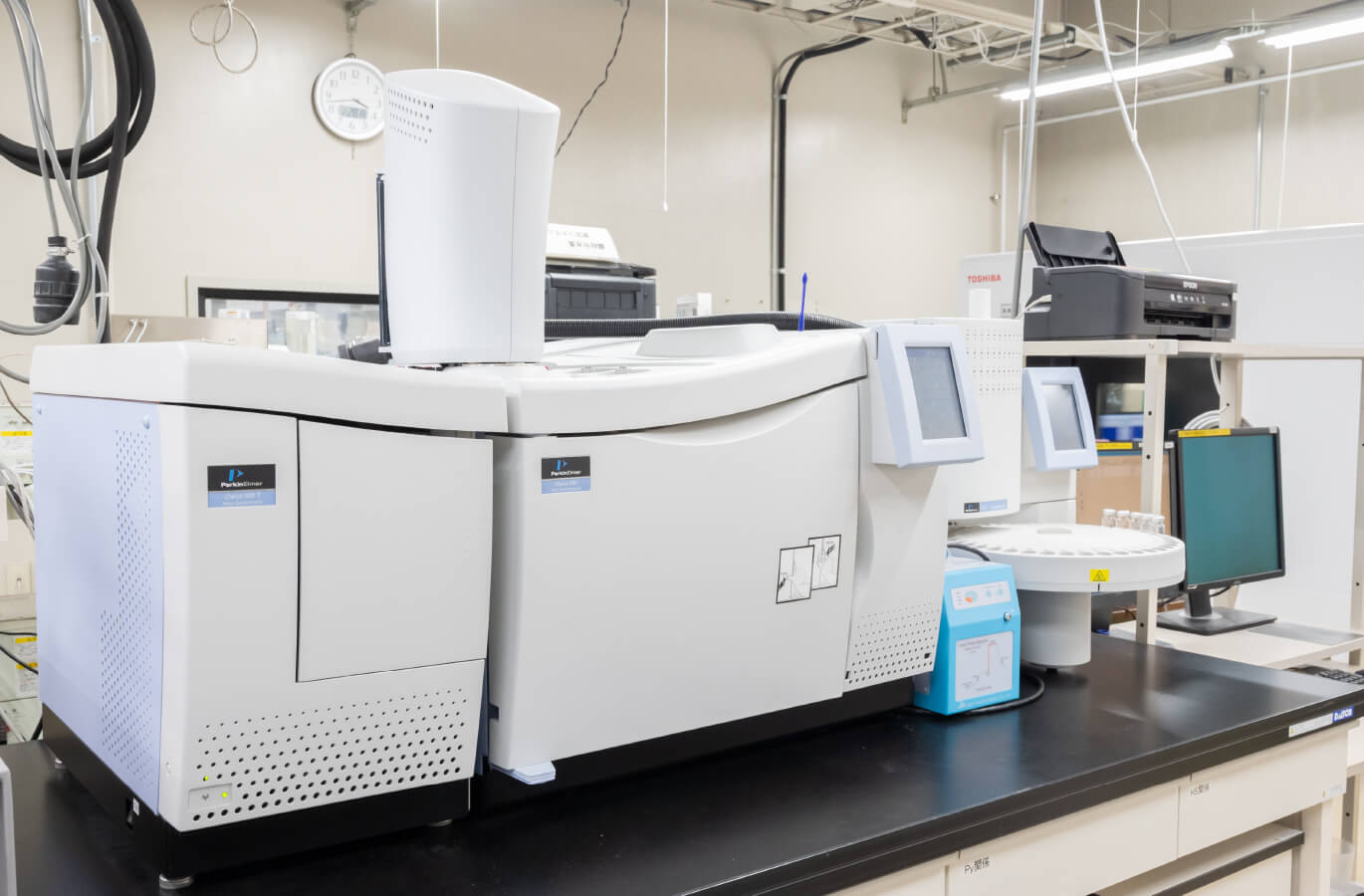
FT-IR
Microscopic FT-IR
Making qualitative and quantitative analysis using the IR spectrum obtained by irradiating the sample with infrared light.
FT-IR microscopy enables analysis of micro-area that is too small to be seen.
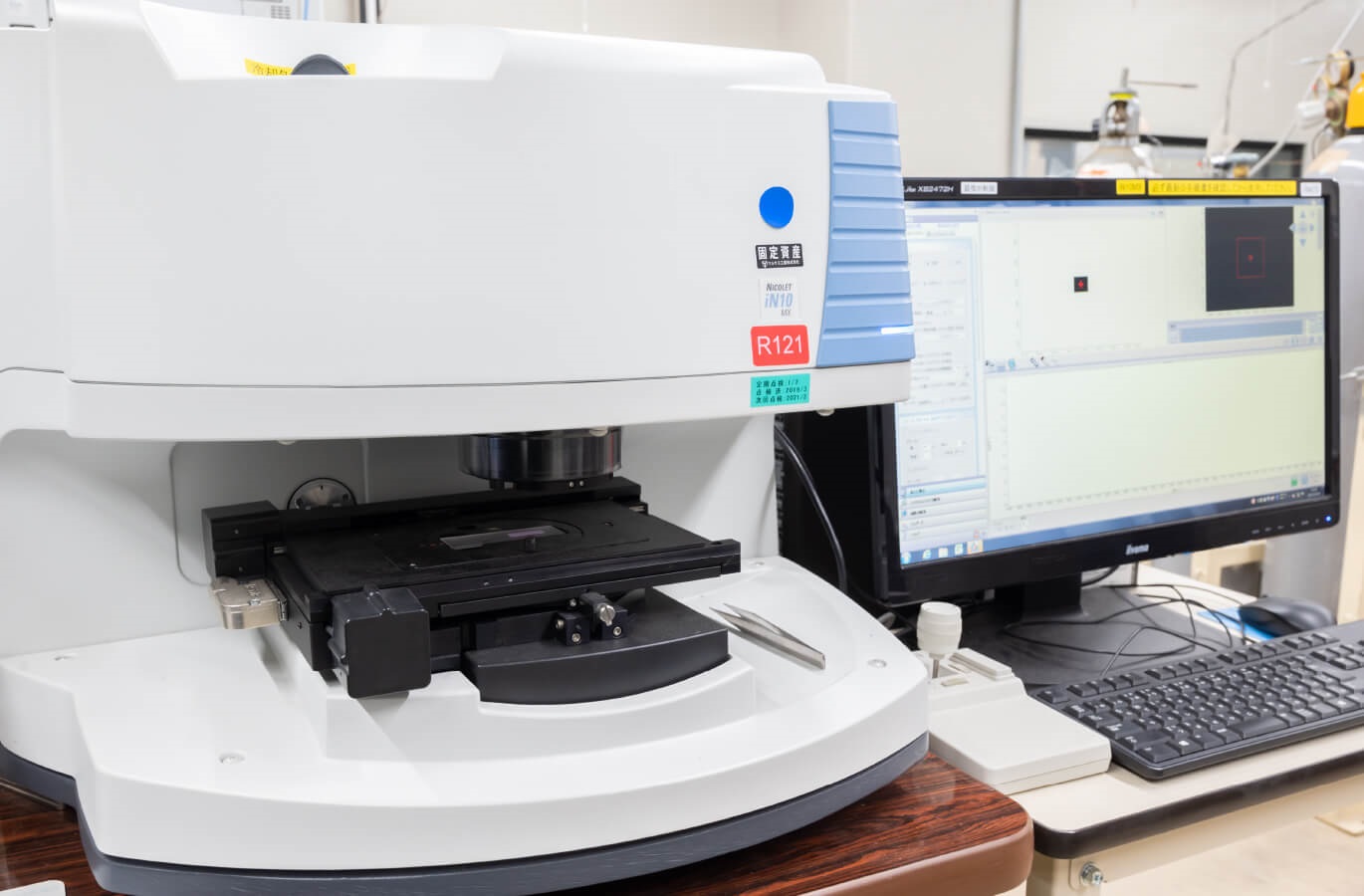
Contaminant measuring device
Detecting micron-order foreign matter collected from inside of products, and discriminates the size, quantity, and type (metal, carbon, fiber) by using high-speed image processing technology.
